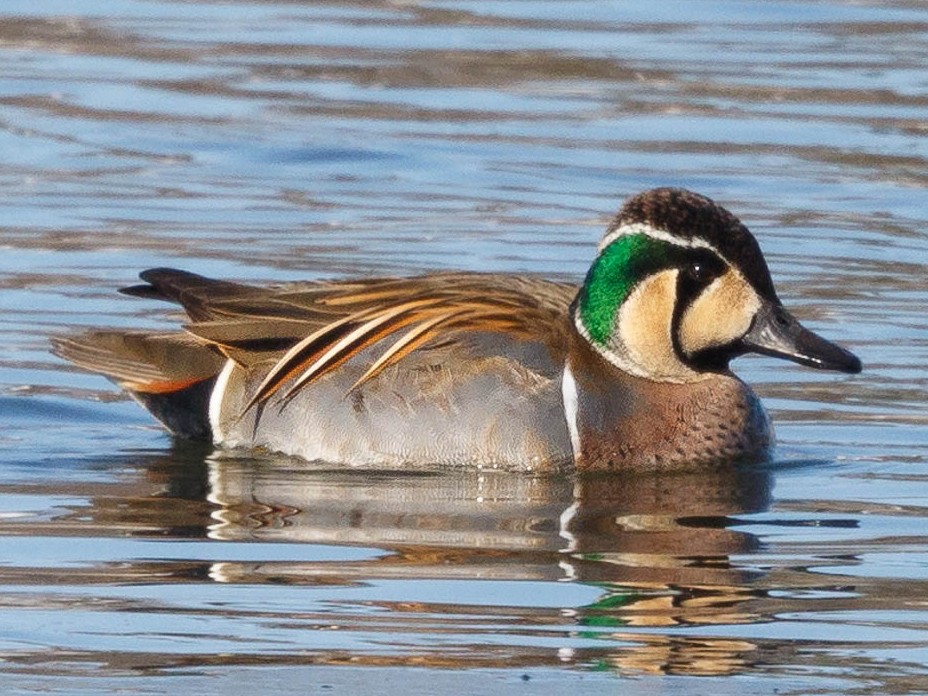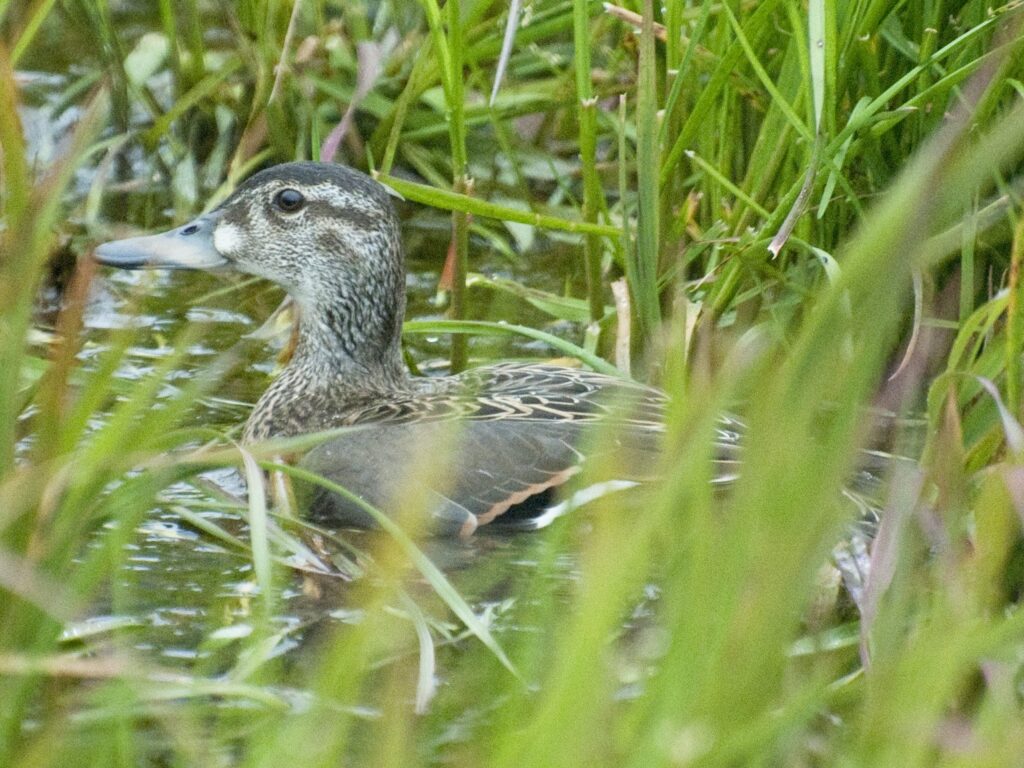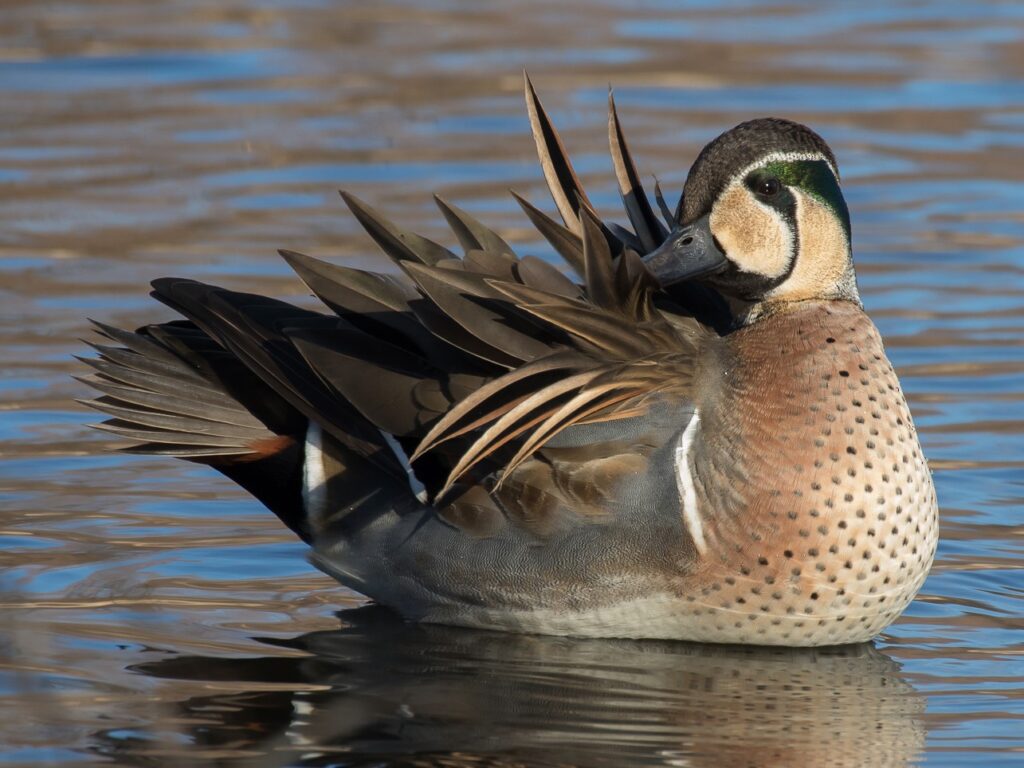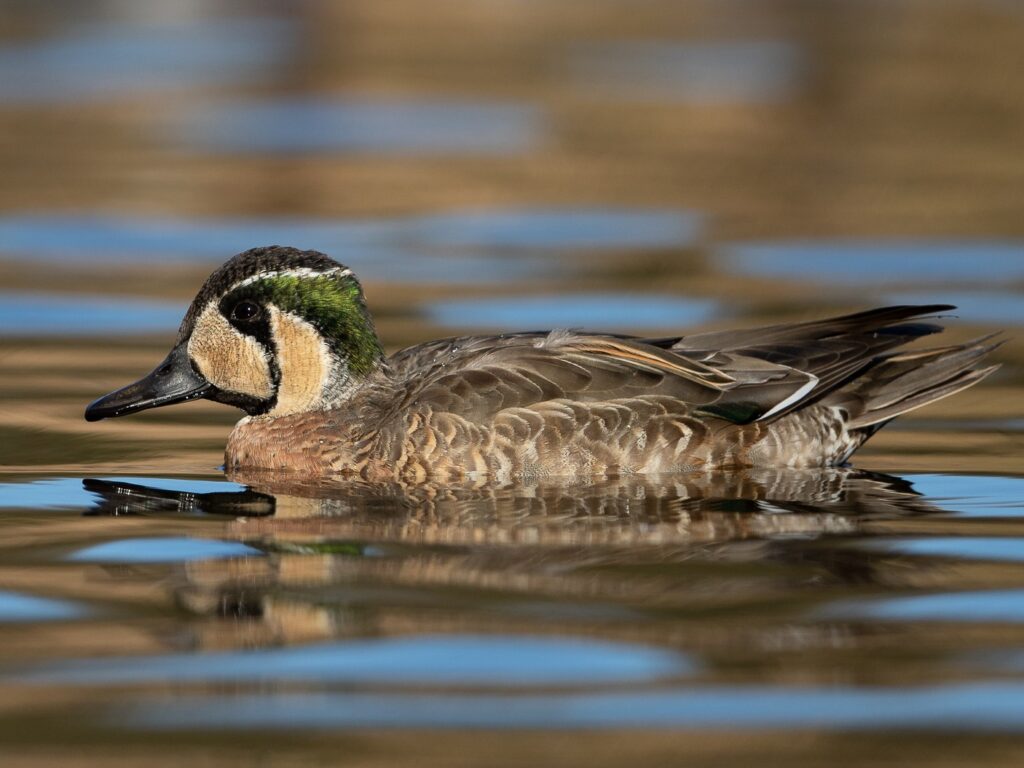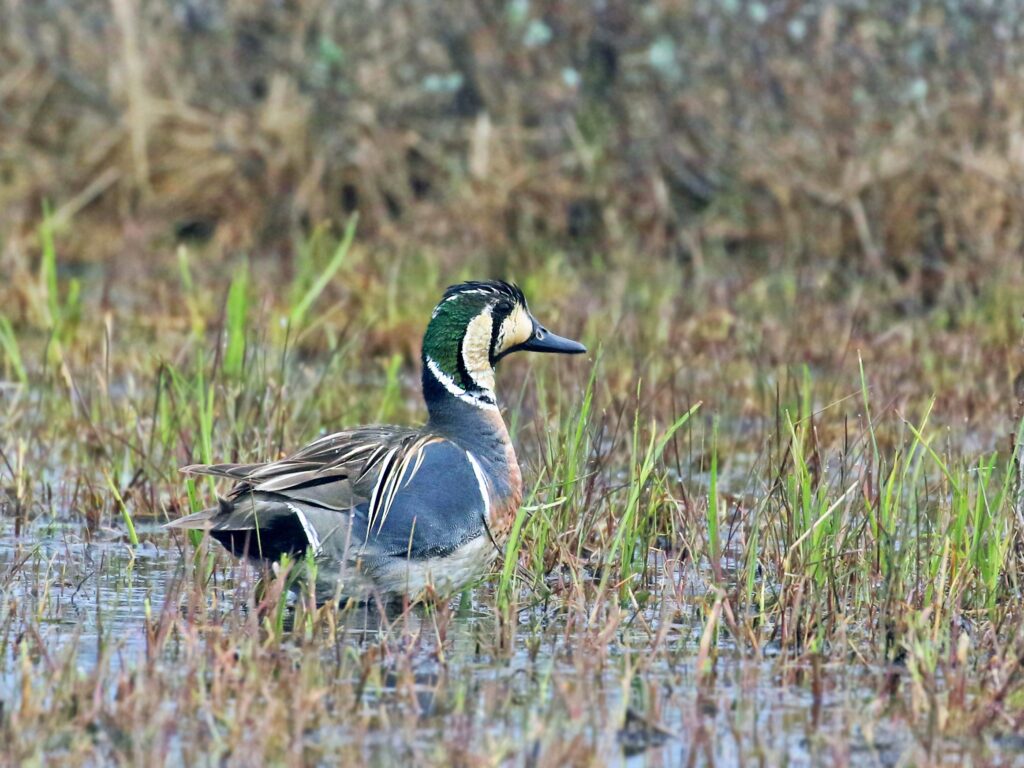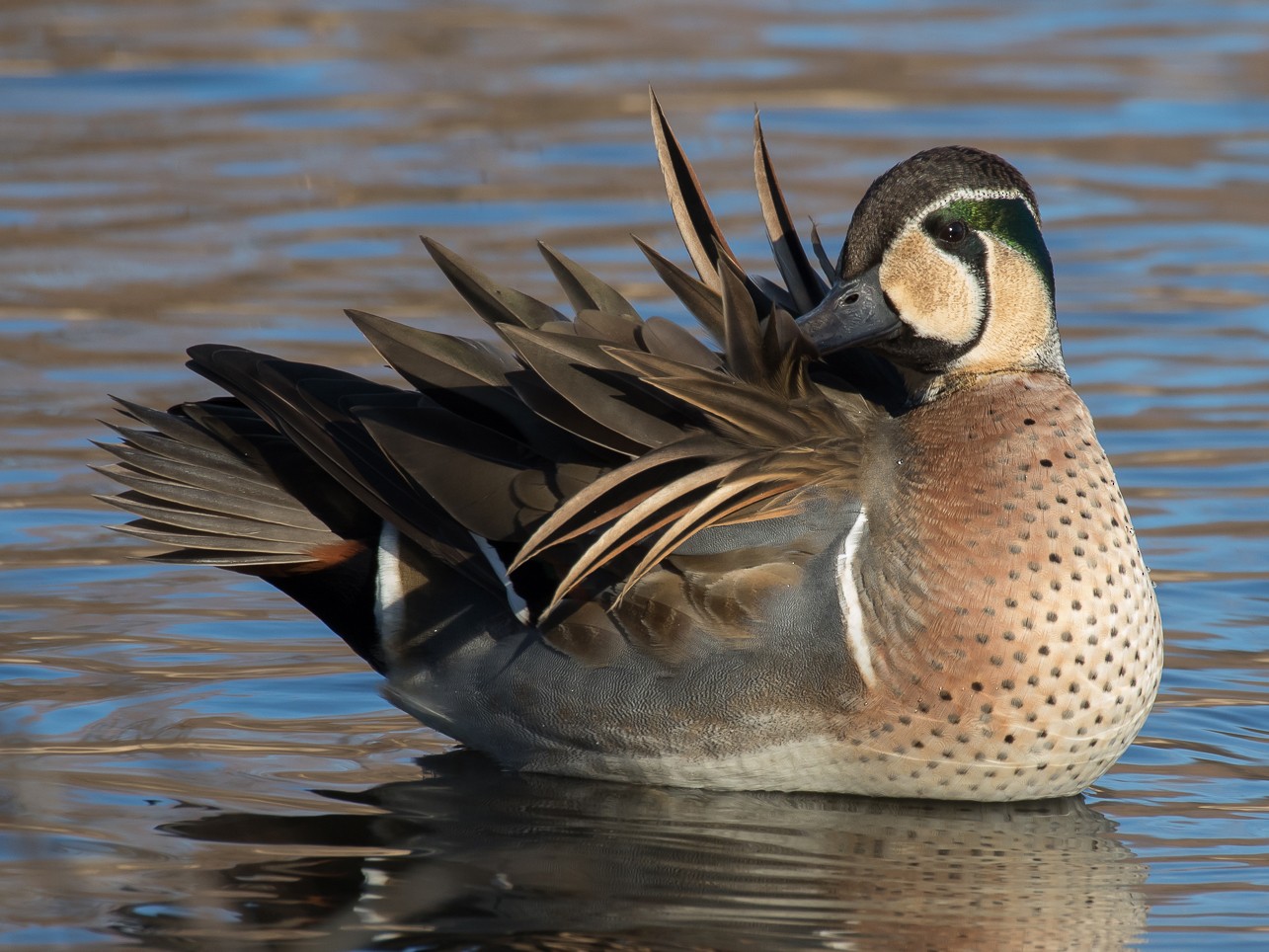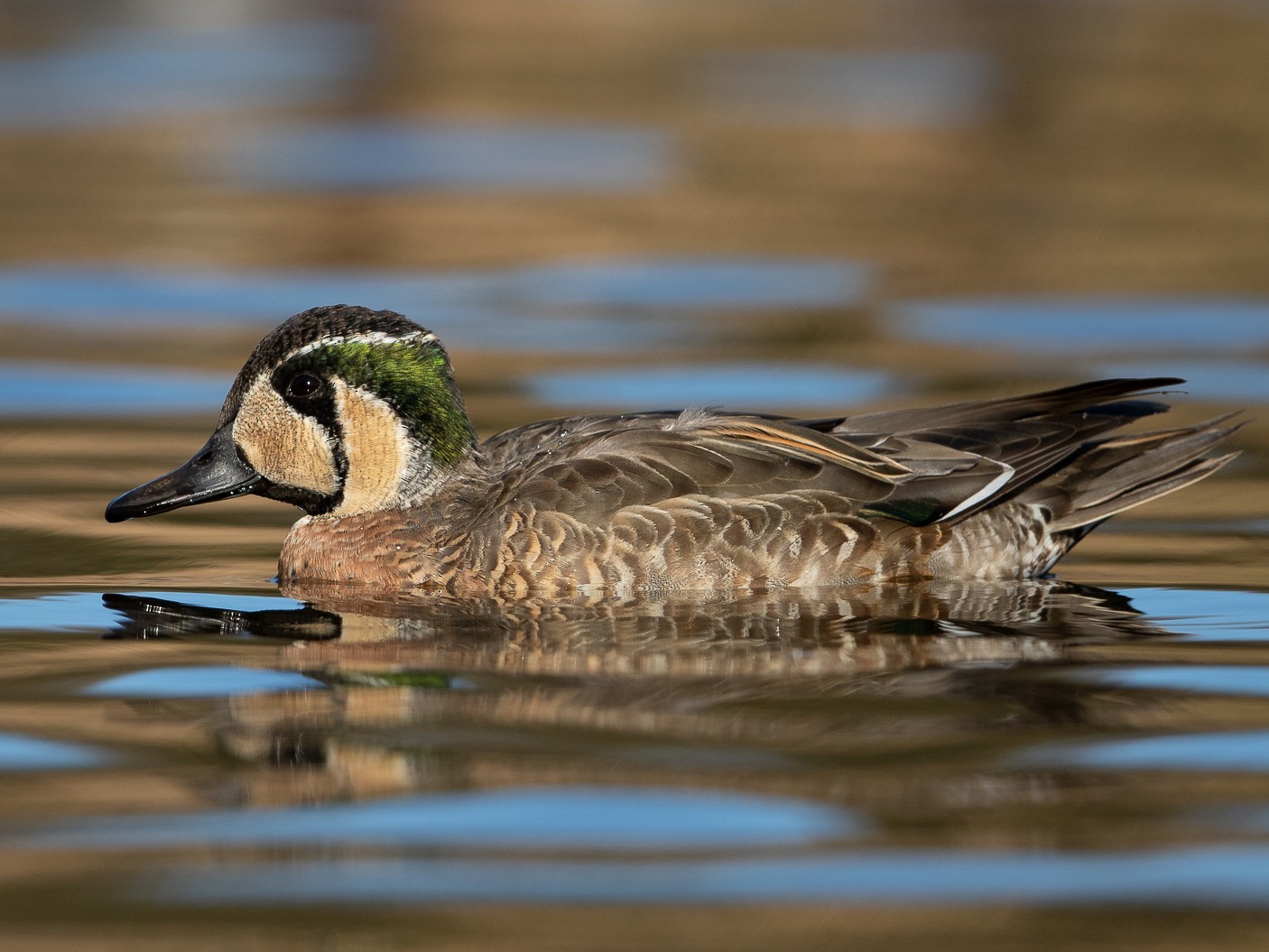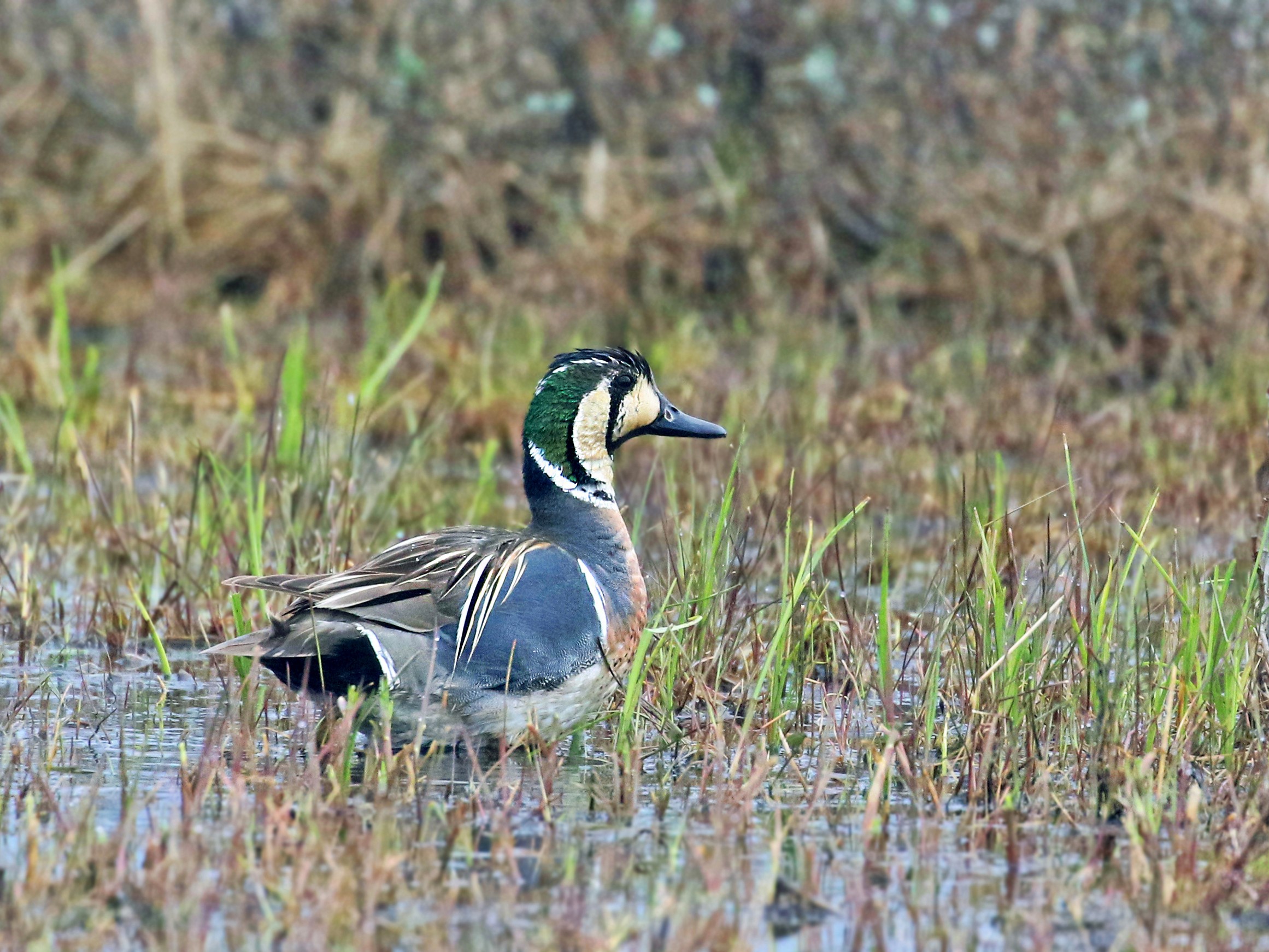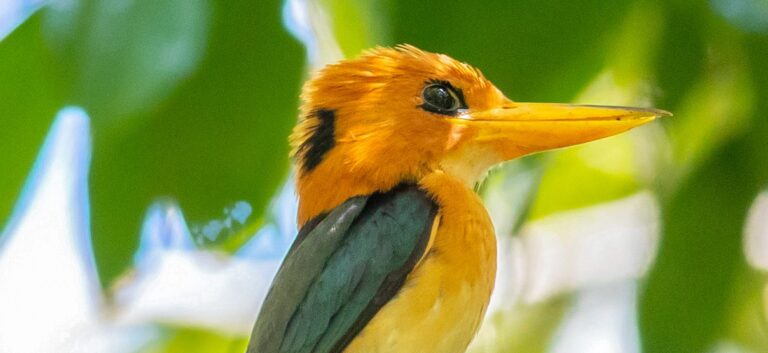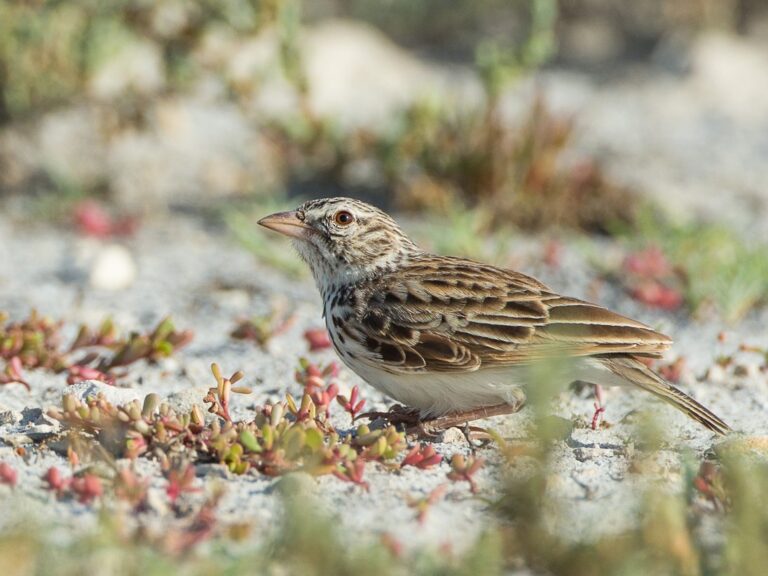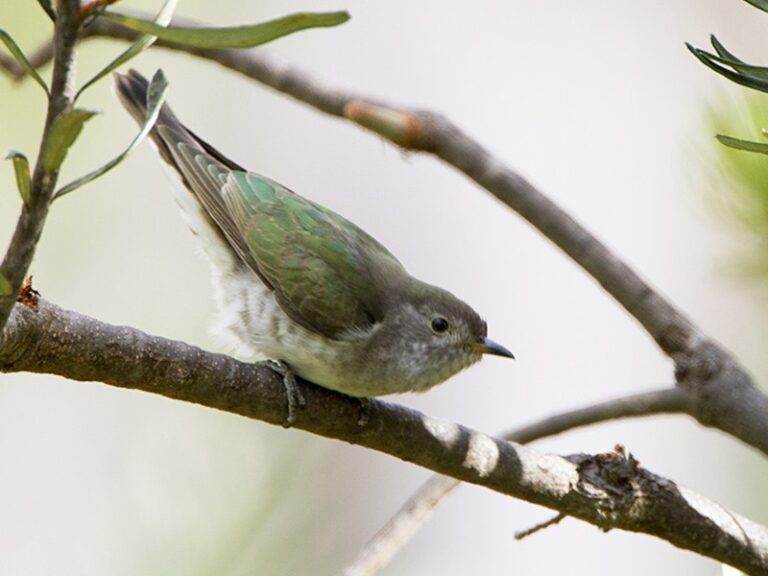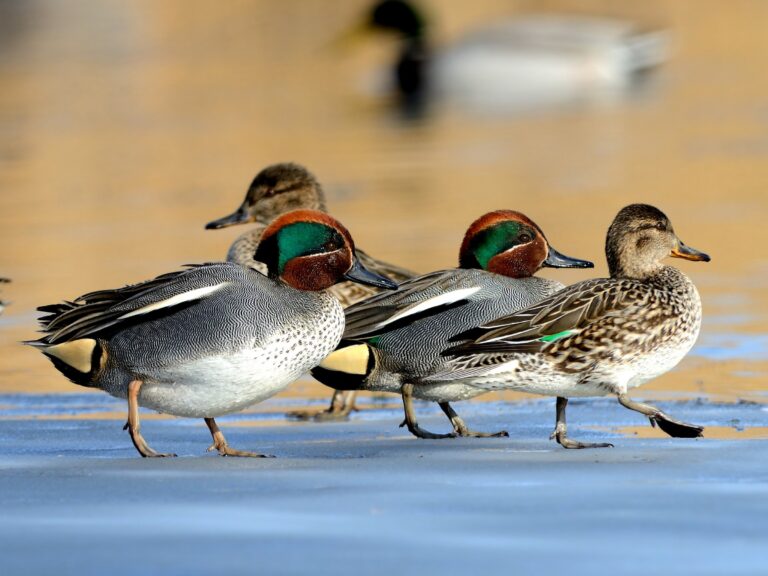Baikal Teal: Discovering the Enigmatic Beauty of Asia’s Unique Waterfowl
The Baikal Teal, scientifically known as Anas formosa, is a fascinating waterfowl known for its striking plumage and unique behaviors. This species migrates annually from breeding grounds in Siberia to winter habitats in East Asia, including Japan and South Korea. Observers often appreciate this bird not just for its beauty but also for its distinctive vocalizations, which add to the experience of spotting them in their natural environment.
These ducks thrive in shallow, freshwater habitats that support aquatic vegetation, which is essential for their diet. They primarily feed on seeds, roots, and invertebrates found in these areas. As a migratory bird, the Baikal Teal plays a vital role in its ecosystem, contributing to the balance of its habitat. Conservation efforts are necessary as their populations can be affected by habitat loss and environmental changes.
Bird enthusiasts and researchers alike value the Baikal Teal for its role in ornithology and its significance in various cultures. Understanding its behavior and ecology can provide insights into broader ecological trends and the health of wetland environments.
Key Takeaways
- The Baikal Teal migrates from Siberia to East Asia for wintering.
- It feeds primarily on aquatic vegetation and invertebrates in freshwater habitats.
- Conservation measures are crucial for maintaining stable populations of this beautiful bird.
Species Overview
The Baikal Teal, scientifically known as Anas formosa or Sibirionetta formosa, is a unique species with specific traits. This overview will detail its taxonomy, physical characteristics, and distribution across various regions.
Taxonomy and Nomenclature
The Baikal Teal belongs to the family Anatidae. Its Latin name is Anas formosa, with the four-letter alpha code being BATE. This species was first described in the 19th century. Over time, taxonomists have debated its classification within the genus Anas, leading to the current preference for the genus Sibirionetta. The name reflects the bird’s native regions, emphasizing its connection to Siberia and other areas in East Asia, such as China and Japan.
Physical Description
Baikal Teals are medium-sized ducks with distinctive features. Males showcase striking plumage, including a green cap on their heads and a rich chestnut-brown body. Their wings have a vibrant blue speculum, noticeable in flight. Females, on the other hand, exhibit more subdued colors, featuring a mottled brown appearance that aids in camouflage. Both sexes possess a characteristic slender bill that is primarily yellowish. In addition to their visual attributes, Baikal Teals have a unique vocalization, making a mix of whistles and quacks during mating calls and when in flocks.
Distribution and Habitat
Baikal Teals inhabit various regions across northeastern Asia, particularly in Siberia, China, Japan, and South Korea. They can be found around wetlands, lakes, and rivers, preferring shallow waters with abundant aquatic vegetation. During migration, these birds travel significant distances to reach their wintering grounds, especially in southeastern China. The Baikal Teal is known for its adaptability to different habitats, thriving in both natural and human-modified areas. Monitoring their populations is crucial, as changes in habitat due to climate or human activities could impact their status.
Behavior and Ecology
The Baikal Teal is an intriguing dabbling duck known for its unique behaviors and ecological adaptations. Its diet, breeding practices, and migration patterns are all essential aspects that contribute to its survival and reproduction.
Diet and Feeding
Baikal Teals primarily feed on aquatic plants, seeds, and small invertebrates. They often forage on the surface of the water or dabble to reach their food. In Eastern China, fields and shallow wetlands provide a rich source of food during feeding times.
The ducks are particularly drawn to areas with ample vegetation, where they can find both plant material and small insects. They are also known to occasionally graze on land to supplement their diet. The distinct speculum of Baikal Teals displays beautiful colors that help identify them during feeding.
Breeding and Reproduction
During the breeding season, Baikal Teals exhibit vibrant breeding plumage, enhancing their attractiveness. Males typically display through various vocalizations, including soft whistles and calls, to attract females.
They usually nest in dense vegetation near water sources, providing safety from predators. The female lays about 6-12 eggs, which she incubates alone. After hatching, chicks are precocial and can swim soon after entering the water, relying on their mother’s guidance for food and safety.
Migration Patterns
Baikal Teals are migratory birds, nesting in northern regions and wintering in southern areas such as Eastern China. They typically follow specific migration routes, moving in groups during migration seasons.
Their migration begins in late summer, and they travel thousands of kilometers to reach their winter habitats. They often use wetlands and lakes as stopover points to rest and feed during their journey. The strength and coordination of their flight are crucial for their survival during these long migrations.
Conservation Status
The conservation status of the Baikal Teal is critical due to various factors affecting its population and habitat. Understanding population trends and the threats it faces is essential for conservation efforts.
Population Trends
Baikal Teal (Anas formosa) populations are currently facing challenges, partly due to habitat loss and hunting. Estimates suggest that wintering populations in areas like Korea are decreasing, which raises concerns about their long-term survival.
Bird counts during winter seasons indicate that numbers fluctuate, often influenced by environmental changes and human activities. The Baikal Teal is considered a vulnerable species, with some regions experiencing significant declines. The periodic appearance of vagrants, or individuals that stray far from their usual range, highlights the challenges the species faces in maintaining a stable population. Continued monitoring is essential to assess these trends more accurately.
Threats and Conservation Efforts
The primary threats to Baikal Teal include habitat destruction, hunting, and climate change. Wetlands, essential for their wintering and breeding, are increasingly threatened by development and pollution.
Conservation efforts focus on habitat protection and restoration. Groups are working to create protected areas where Baikal Teal can thrive without disturbances. Additionally, there are initiatives to regulate hunting to prevent over-exploitation of the species. Vocalizations of the Baikal Teal are noted for their distinct patterns, which play a role in mating and territorial behaviors. These efforts aim to provide a more sustainable environment, ensuring the survival of this unique bird species.
For more information on conservation efforts, visit the Wildfowl and Wetlands Trust.
Ornithology and Birding
The Baikal Teal, known scientifically as Sibirionetta formosa, presents exciting opportunities for birders. This species is recognized for its unique migration patterns and vocalizations, making it a fascinating subject for enthusiasts and researchers alike.
Birding Opportunities
Birders often seek out the Baikal Teal during its migration periods. It primarily breeds in Siberia, migrating to regions in Japan, South Korea, and China for winter. Observers may find them in wetland areas, especially near lakes, rivers, and marshes.
The American Birding Association (ABA) encourages enthusiasts to participate in birding events, where spotting the Baikal Teal can add to their Bird List. In North America, it is considered a rare sighting, making it a coveted target for birders aiming for a Big Year. Resources like the North American Bird Search can help locate reported sightings.
Recognition in the Field
Identifying a Baikal Teal can be straightforward with practice. Males display striking plumage with a chestnut-colored head and greenish panels on their wings. Females are more muted, sporting a mottled brown appearance, which offers excellent camouflage in their habitat.
Birders should also note their vocalizations, which include soft whistles and quacking sounds. These calls can be heard during courtship and while establishing territory. Field guides, such as Birds of North America, provide crucial information on visual and auditory characteristics, assisting birders in accurate identification while in the field.
Cultural and Historical Significance
The Baikal Teal is more than just a bird; it holds cultural and historical significance in the regions surrounding Lake Baikal. Many local communities cherish these birds, often associating them with seasonal changes.
Historically, the Baikal Teal has appeared in art and folklore among indigenous peoples. Their migration patterns mark important seasonal events, guiding fishing and hunting practices.
The vocalizations of the Baikal Teal are another aspect of its significance. These sounds are often described as soft quacks and whistles. Their calls are heard during mating displays and are a cherished part of the natural soundscape.
In addition, the Baikal Teal symbolizes ecological health. Efforts to preserve its habitat highlight the importance of biodiversity. Recognizing this bird’s role helps promote conservation initiatives that benefit the broader ecosystem.
The relationship between the Baikal Teal and local cultures emphasizes the connection between nature and community. This bird represents a living link to the traditions and practices of people in the area.
For those interested in deeper exploration, studies on the migration routes of Baikal Teal provide insight into their ecological role and human interactions.
Frequently Asked Questions
This section addresses common inquiries regarding the Baikal Teal. It covers sexual dimorphism, migration patterns, interesting facts, social behaviors, conservation status, and habitat preferences.
What distinguishes males from females in the Baikal Teal population?
Male Baikal Teals are notable for their vibrant plumage, featuring a striking green head and a chestnut-brown body with white markings. In contrast, females display a more muted brown color, ideal for camouflage, especially during nesting.
How does the migration pattern of the Baikal Teal differ seasonally?
Baikal Teals migrate between breeding and wintering grounds. They typically fly to their breeding areas in East Asia during spring, while in autumn, they move to warmer regions in Southeast Asia and the Indian subcontinent to escape the cold.
Can you share some interesting facts about the Baikal Teal?
The Baikal Teal is known for its unique vocalizations. Males often produce a series of whistles and trills during courtship displays. They are also one of the few dabbling ducks that can be found in high-altitude lakes.
What are the characteristic behaviors of Baikal Teal flocks?
Baikal Teals are social birds that often form large flocks during migration and in wintering areas. They engage in synchronized flying and display behaviors to strengthen their social bonds and attract mates.
How does the conservation status of the Baikal Teal impact its hunting regulations?
The Baikal Teal is classified as a species of least concern, but certain regions have set regulations to protect their populations, especially during breeding seasons. Hunting is restricted in important habitats to prevent population decline.
What habitats are preferred by the Baikal Teal and how does this affect its distribution?
Baikal Teals favor shallow freshwater lakes, marshes, and wetlands, which provide ample feeding opportunities. Their distribution is closely tied to these habitats, influencing where they are most commonly observed during different seasons.
